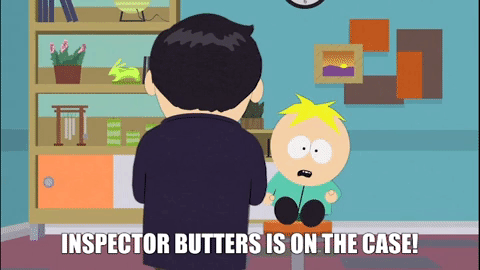the 3 modes of threat hunting
PREFACE
This is a short article covering a single foundational concept related to threat hunting. I’m publishing it here as a stand-alone post because I would like to reference it in some of my courses without needing to reproduce it in every such instance. Nevertheless, I hope, even here by itself, it might provide some value to you.
INTRODUCTION
Threat hunting, by its literal definition, is predicated on a single presumption: we presume a compromise has already occurred, and thus an adversary is established on our network.
This tenet - the presumption of compromise - is an extremely useful abstraction, serving as the main departure point for the entire discipline. However, I believe it’s also useful to add some nuance to help us distinguish between different situations within this overarching context. Yes, we presume a breach has occurred, but our approach varies depending on whether we’re in a state of presumption, suspicion, or actual confirmation of a breach.
As threat hunters, we need to differentiate between various mental modes which subsequently guide our behavior regarding which exact tools, techniques, and procedures we decide to apply at any given moment.
MODE 1 - OPEN-MINDED EXPLORATION

In the beginning, we approach a system anew, presuming a breach has taken place, even though we do not yet possess any concrete indications to confirm that it is indeed so. In this mode, we operate with a beginner’s mind - we strive to stay objective, free of bias, and regard everything as potentially suspicious. Here, it's more about breadth than depth.
Instead of honing in on any specific process, event, connection, or service, we look at our system as a whole. We examine major indicators - high-probability, representative samples - and scrutinize them with the goal of finding any sign that something might potentially be rotten in the state of Denmark.
And then, once we do…
MODE 2 - BUILDING A CASE

The second mode begins the moment we find something that triggers our Spidey sense - perhaps an unusual parent-child process relationship or a sporadic connection to an unknown IP. Something is off, our interest is piqued, but it’s not a slam dunk yet. The last thing we want to do at this point is get trigger happy and call in the DFIR cavalry only for them to immediately refute our claim. Oh hell naw.
So our mindset switches - instead of viewing everything as potentially suspect, we now seek to build a case around what we’ve identified as the potential indicator of compromise. We thus employ a more focused methodology, collecting supporting evidence until we feel satisfied that our conviction stands on firm empirical grounds, i.e., there’s a (very) low probability of a false positive.
Once this threshold has been reached we then declare an incident and alert DFIR.
MODE 3 - SUPPORT + COMMUNICATION

The key point to understand is that once DFIR is alerted and the incident is confirmed, they take the lead in calling the shots. We are no longer leading, we are supporting - this means the nature of our role can vary considerably. We may be heavily involved in the proceedings, or we may not be involved at all. But the point remains: the extent of our involvement is not our decision.
Therefore, this mode is less structured as it can manifest in a multitude of ways. We are likely to receive strict and highly specific instructions from DFIR, which we must adhere to. Our goal is thus to support them to serve the greater goal of minimizing Mean Time to Remediation (MTTR).
FINAL THOUGHTS
I hope this conceptual model will be of some use to you. For me, it helps to guide the overall operational strategy, especially when it comes to distinguishing between Modes 1 and 2. As a simple example, I view log analysis as a poor choice for Mode 1 since we could be dealing with a vast amount of data to sort through for as-of-yet undefined signs of compromise. This is quite impractical. However, once we switch to Mode 2 and start searching for specific signs, which helps limit what logs are of interest, log analysis can become a very useful tool to build our case.
If you’d like to learn more consider reading up on the following different, yet related, models: